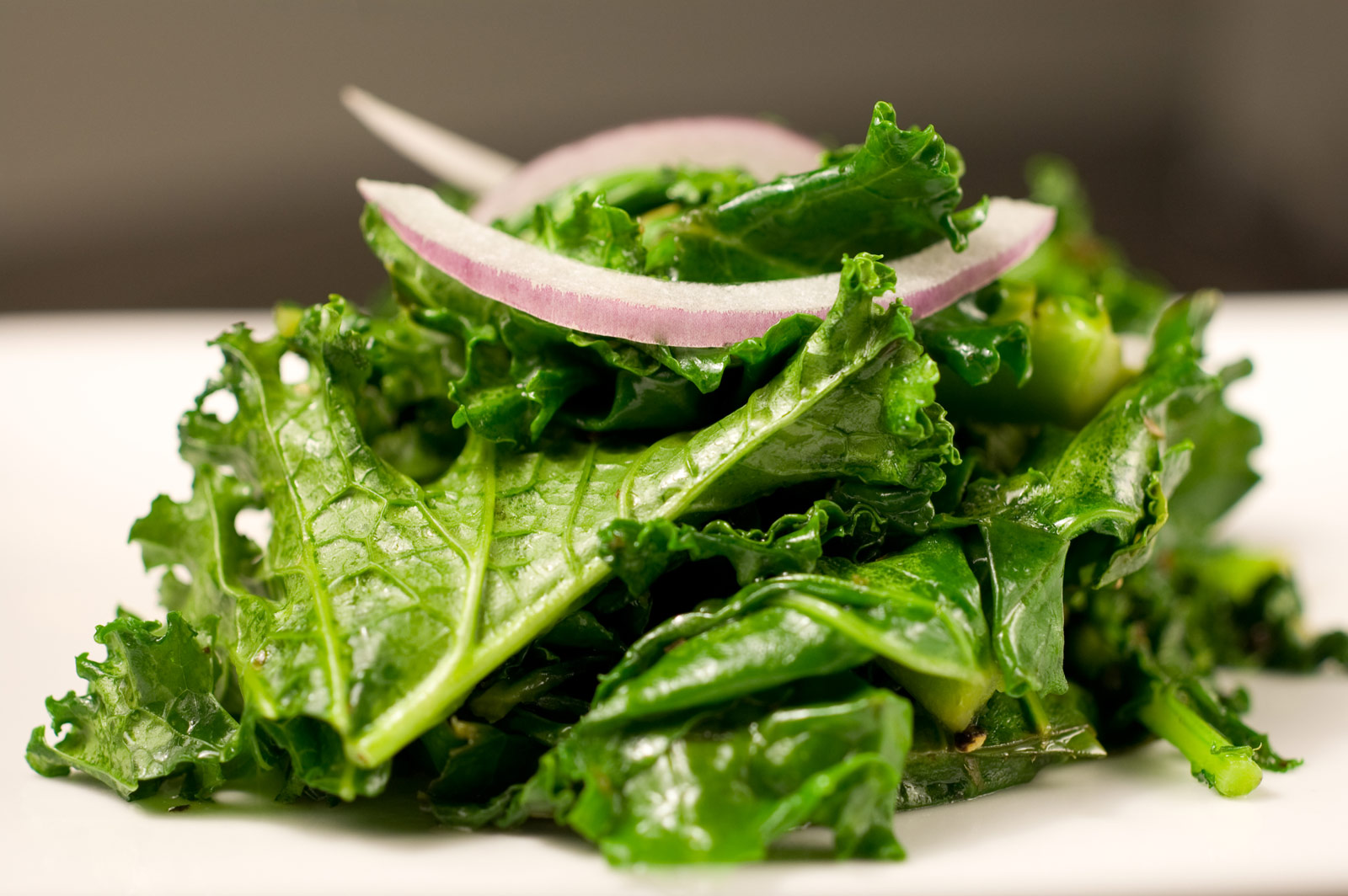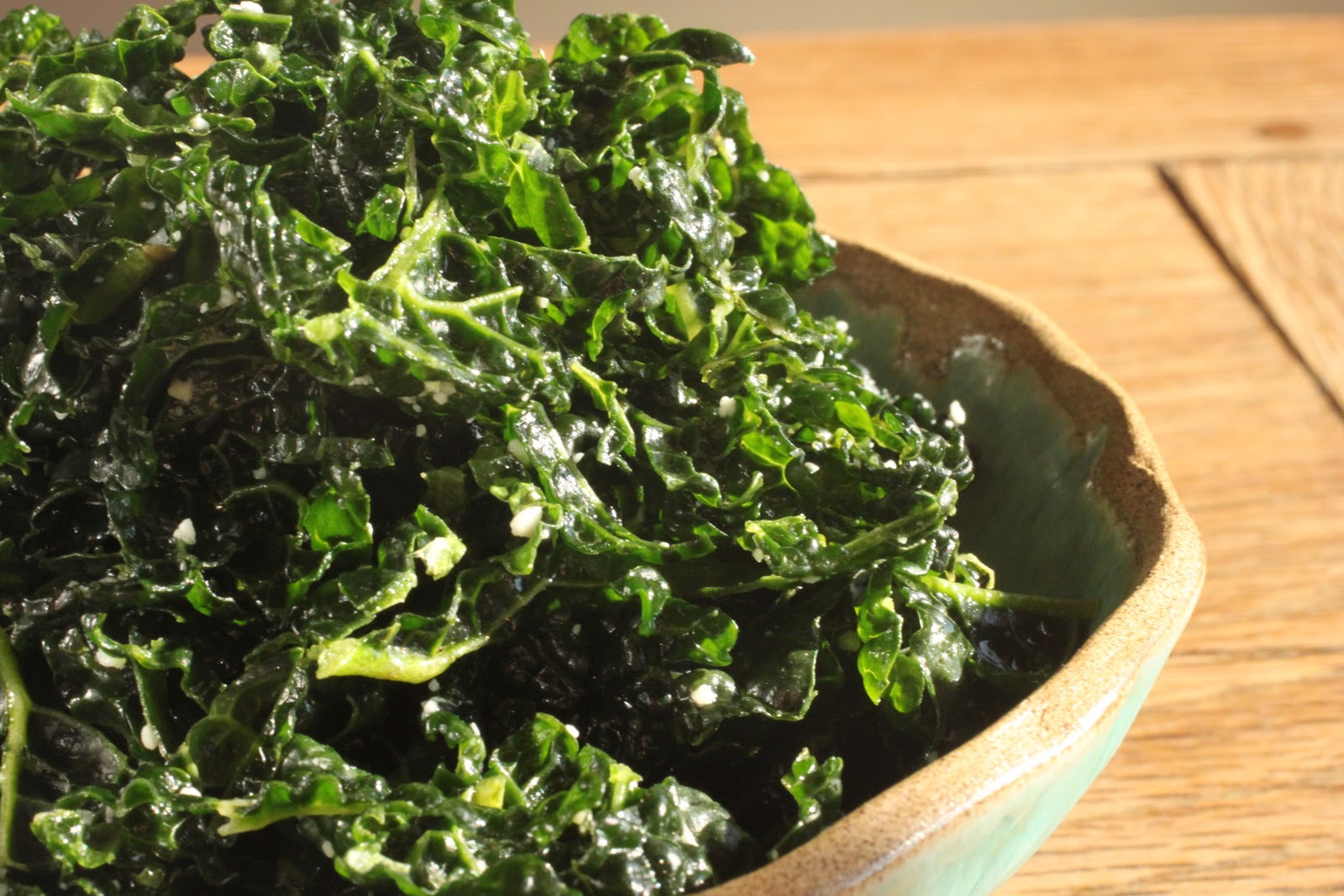Kale is a nutritional superfood — it almost makes broccoli look like Doritos. But if you’re used to seeing kale as merely a garnish or perhaps an annual that provides colorful winter foliage for your garden, you might wonder how the heck to cook it. Don’t worry: star vegan chef Chef Ryan is on the job. Bam!
What is kale?
Kale is in the Brassica family along with collards and cabbage. You’ll see it referred to as green, purple, dinosaur, or lacinato kale.
In Northern hemispheres, kale is a fall and early winter crop. Kale’s thick, sturdy leaves enable it to survive light snow, which means that if you grow it in your garden, you might be able to celebrate the holiday season with a tasty kale and bean soup. (More on that below.)
Kale: a nutritional powerhouse
Kale is jacked with nutrition. It’s extremely dilute in energy (in other words, a lot of kale doesn’t add up to many calories… but it sure adds up to a lot of nutrients).
1 cup of of kale provides:
- 33 calories
- 7 g carbohydrate
- 2 g protein
- 0.5 g fat
- 1 g fiber
Kale has a near-perfect protein score of 92 (ideal is 100), which means that it contains nearly a full complement of all the essential amino acids.
1 cup of kale also provides:
- 684% (!!) of the RDA for Vitamin K
- 206% RDA for Vitamin A, which includes beta carotenes and the antioxidants lutein and zeaxanthin (both important for eye health)
- 134% RDA for Vitamin C
- Trace amounts of many B vitamins: thiamin, riboflavin, niacin, vitamin B6, folate, and pantothenic acid
- 26% RDA for manganese
- 10% of RDA for copper
- 9% of RDA for calcium and potassium
- 6% of RDA for iron and magnesium
- Trace amounts of sodium, zinc, and selenium
Kale actually provides more calcium per calorie than dairy foods. Research has shown that calcium is better absorbed from kale than from milk.

How to select and store kale
- Look for firm, dark coloured leaves. They should be moist but not slimy. It should smell “fresh”.
- De-stem with a knife, kitchen shears, or simply use one swoop with your hands down the stem.
- After washing, kale leaves can be stored in a salad spinner or wet paper towel inside a plastic bag in the fridge.
How to cook kale
Kale has a somewhat stronger flavour than a mild green such as spinach, so it works well in dishes that are hearty and/or savoury, such as salads with vinaigrettes, soups and stews, stir-fries, curries, etc. It plays well with fresh herbs, onions, garlic, and nuts; for example, try adding kale to a herb pesto.
However, kale can also be friendly with sweet stuff. A few leaves of kale will also blend nicely into a SuperShake, and kale pairs nicely with fall fruits such as apple, pear, and cranberries.
My 5 top ways to eat more kale are below. And yes, they are simple.
Kale recipe #1: Kale chips
Part 1
Part 2
Part 3
Part 4
Recipe
- 1 bunch of kale, broken into small, uniform pieces
- Olive oil, salt, spices, apple cider vinegar or lemon juice
Put pieces of kale in big container with a lid. Add about 1-2 tbsp of olive oil, a few dashes of salt and any other spices you enjoy. Add ~1-2 tsp of apple cider vinegar or lemon juice. Put on the lid and shake the container so the kale pieces are coated evenly. You can also mix the kale leaves with the seasonings using your hands.
Set kale pieces on a baking sheet, evenly distributed. Bake at 350-400 degrees F for 8 – 12 minutes. Don’t leave the oven. Watch these closely. When they are crisp, they are done. If they get burned, they taste horrible.
Kale recipe #2: Kale & nut butter sandwich or wrap
Part 1
Part 2
Recipe
- 1 sprouted grain wrap or 1-2 slices of sprouted grain bread (good toasted as well)
- Big spoonful of nut butter
- A few pieces of cut up banana/thinly sliced apple or 100% fruit jam
- 1-2 kale leaves, finely minced in food processor
Get your sprouted grain wrap/bread, spread on nut butter, add fruit or sweetener, top with kale!
Kale recipe #3: Beans & kale
Part 1
Part 2
Recipe
- 1 large white or sweet onion, diced
- 1 bunch of green or purple kale
- 1-3 tbsp olive oil
- 1-2 cans of white beans
- Salt/pepper to taste
Use a wok or pot to sauté the onions in some olive oil until they are clear and wilting. Then begin adding kale one handful at a time. It will start to wilt. Add a bit more oil if necessary. Once all of the kale is added, mix in the can(s) of beans. Let it heat evenly for several minutes. Add salt/pepper to taste. This will keep in the fridge for about 4 days. You can freeze leftovers as well. If you like, you can also throw in a clove of garlic with the onions at the beginning.

Kale recipe #4: Kale in Super Shake
Recipe(s)
- Lots of super shake recipe combinations for kale, see: Turn Your Protein Shake Into A Super Shake
Kale recipe #5: Simple kale salad
Try using a couple of different kinds of kale here, such as purple and black kale, for a visually appealing mix.
Part 1
Part 2
Part 3
Part 4
Recipe
- 1 bunch of kale, sliced into small strips
- 1/8 cup olive oil
- 1/3 cup apple cider vinegar
- 1 tsp celery seed
- 1/2 tsp salt
- 1 tbsp agave nectar or maple syrup
Add kale strips to a large container with a lid. Prepare dressing in a pot on the stove. Bring the olive oil, cider vinegar, celery seed, salt, and agave/maple syrup to a boil. Let it boil for about 1 minute. Immediately pour over kale.
Let it sit for about 1 minute. Then cover the container and shake up the kale so all strips are evenly coated with dressing. Mix in favorite additions – like hemp seeds, flax seeds, dry cranberries, raisins, pepitas, etc.

For more great recipes like these, check out Gourmet Nutrition V2. Containing over 120 recipes to keep your taste buds alive and your body looking great, Gourmet Nutrition Volume 2 is printed in full color with a photo for every recipe to give you plenty of presentation ideas. And it’s got a host of nutrition strategies in place so you can build the body you want and keep it for life.
Learn more
To learn more about making important improvements to your nutrition and exercise program, check out the following 5-day video courses.
They’re probably better than 90% of the seminars we’ve ever attended on the subjects of exercise and nutrition (and probably better than a few we’ve given ourselves, too).
The best part? They’re totally free.
To check out the free courses, just click one of the links below.




Share